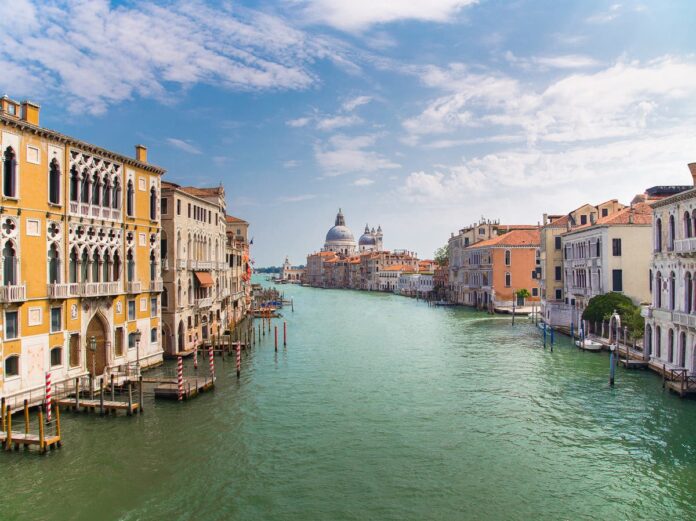Venice and its lagoons should be added to a list of Unesco world heritage sites that are in danger due to multiple threats on the fragile city, the UN’s cultural protection agency has said. ‘La Serenissima’ is at risk of irreversible damage, according to a Unesco report, with the city not doing enough to protect itself from the impact of mass tourism, overdevelopment and climate change, such as rising sea levels. Unesco has also stated that corrective measures proposed by the Italian government are ‘currently insufficient and not detailed enough’ to protect it. Venice , which is spread across 118 islands, was named a world heritage site in 1987. The UN body had threatened to add it to the danger list in 2021, and the iconic Italian city narrowly avoided the designation after introducing emergency measures, including a ban on large cruise ships in certain areas . Unesco has now accused Italy of not ‘communicating in a sustained and substantive manner since its last committee session’ two years ago. The ‘long-standing but urgent issues’ are ‘hindered by a lack of overall joint strategic vision for the long-term preservation’, Unesco added. A spokesperson for the Venice municipality told Reuters that officials ‘will carefully read the proposed decision published today by the Centre for Unesco’s World Heritage Committee and will discuss it with the government’. One of Venice’s former mayors has hit out at Unesco, with Massimo Cacciari calling it ‘one of the most expensive and useless bodies on the face of the earth’ that passes ‘judgement without knowledge’ and gives ‘give opinions left and right, which we would do best to disregard’, reports BBC News . According to Unesco, there are 55 world heritage sites that are consider ‘in danger’, while a further 204 are being monitored closely. Those already on the blacklist include locations in Iraq, Libya and Syria, as well as the centre of Odessa in Ukraine. The Great Barrier Reef, off the coast of Australia , remains under ‘serious threat’, and Unesco plans to review the Australian government’s efforts to protect it from pollution and climate change in 2024.


